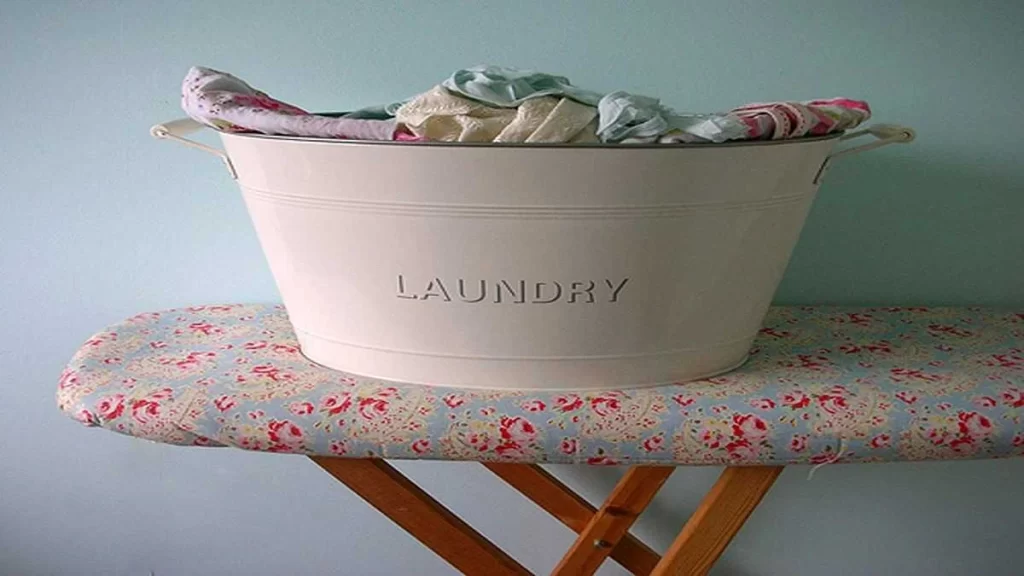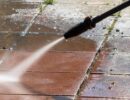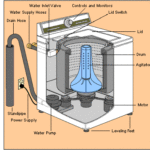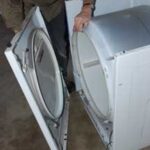Keep your laundry fresh and your washer clean! Learn how to effectively clean a top-loading washing machine using simple household ingredients like vinegar and baking soda.
Your top-loading washer works hard to keep your clothes clean, but over time, it can accumulate detergent residue, fabric softener buildup, dirt, and even mildew. This buildup can affect the cleanliness of your laundry and lead to unpleasant odors. It can even reduce the washing machine’s lifespan. Fortunately, giving it a good cleaning is a straightforward process that can significantly improve its performance and keep your laundry clean and fresh. Follow these simple DIY steps to keep your top-loader in tip-top condition.
Important: Always refer to your washing machine’s owner’s manual for any specific cleaning recommendations or warnings from the manufacturer. The instructions provided here are general guidelines for most top-loading washing machines.
Start by gathering your cleaning supplies. You’ll need a few common household items:
- White vinegar, a natural deodorizer and effective at breaking down soap scum and mineral deposits.
- Baking soda to help to scrub away residue and further deodorize.
- Microfiber cloth or sponge for wiping down interior surfaces.
Make sure the washing machine is empty so the cleaning solutions will work directly on the drum and other interior components without being absorbed by laundry.
1. Run a Hot Water Cleaning Cycle
Hot water helps to dissolve buildup, and white vinegar acts as a natural cleaning agent and disinfectant. Agitation helps to distribute the solution effectively.
- Select the hottest setting by turning the dial or pressing the buttons on your washing machine. This temperature setting is usually labeled “Hot” or “Sanitize.”
- Add white vinegar. Pour approximately 4 cups of white vinegar directly into the empty drum of your washing machine.
- Begin the wash cycle. Allow the machine to fill with the hot water and agitate for a few minutes. This circulates the vinegar and starts to break down any grime and residue clinging to the surfaces.
- Pause for deeper cleaning once the machine has agitated for a few minutes. Just press the pause button to stop the cycle.
2. Let the Vinegar Soak
Leave the paused washing machine with the vinegar solution inside for about one hour. This soaking period is crucial for a thorough clean. Allowing the hot water and vinegar solution to sit in the machine gives it more time to work its magic, disinfecting the interior and helping to eliminate any musty or unpleasant odors.
3. Add Baking Soda for Extra Cleaning Power
After the hour-long soak, resume the wash cycle by pressing the start/pause button again. Once the water begins to agitate, add about 1 cup of baking soda directly into the drum. Baking soda is a mild abrasive that helps to scrub away loosened residue and further freshens the washing machine.
4. Complete the Cleaning Cycle
Let the washing machine run through its complete wash and rinse cycle on the hottest water setting. Allowing the washing machine to complete the entire hot water cycle ensures that all the loosened dirt, vinegar, and baking soda are thoroughly rinsed away.
5. Wipe Down the Interior Surfaces to Remove Residue
Even after the cleaning cycle, some residue may remain on the interior surfaces of the machine. A manual wipe-down ensures these areas are clean.
Once the cycle is finished, open the lid and use a clean microfiber cloth or sponge to wipe down all accessible interior surfaces. Pay attention to the inside of the lid, the agitator (the center post), the top rim of the drum, and any other areas where you see or feel residue buildup.
6. Clean the Dispensers to Prevent Detergent Buildup
Detergent and fabric softener dispensers can accumulate sticky residue that can hinder their function and even contribute to odors. If your top-loading washing machine has removable detergent and fabric softener dispensers, take them out. Rinse them thoroughly under warm, soapy water, scrubbing away any visible buildup with a cloth or brush. Be sure they are completely clean and dry before reinserting them. If the dispensers are not removable, wipe them down thoroughly with a damp cloth.
7. Leave the Lid Open to Air Dry
Moisture trapped inside the washing machine is a breeding ground for mildew and bacteria, which can cause unpleasant odors. After cleaning, leave the lid of your top-loading washing machine open for a few hours to allow the interior to air dry completely. This helps to prevent the growth of mildew and keeps your machine smelling fresh.
8. Establish a Regular Cleaning Schedule
Regular cleaning prevents significant buildup and keeps your washing machine performing optimally. Aim to perform this cleaning process every 1 to 3 months, depending on how frequently you use your washing machine. More frequent use may warrant more frequent cleaning.
Conclusion
Cleaning your top-loading washing machine is a simple but important maintenance task that contributes to cleaner laundry, a fresher-smelling washer, and potentially a longer lifespan for your machine. By following these easy steps and incorporating regular cleaning into your home maintenance routine, you can keep your washing machine working great and your clothes coming out their cleanest.






 Don Vandervort writes or edits every article at HomeTips. Don has:
Don Vandervort writes or edits every article at HomeTips. Don has:




